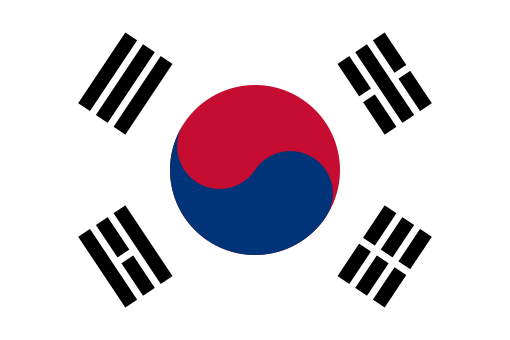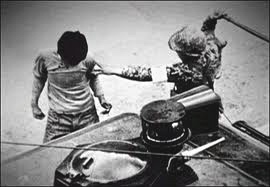Note: In 2016 Han Kang was WINNER of the Man Booker International Prize for The Vegetarian, her previous novel.
“Is it true that human beings are fundamentally cruel? Is the experience of cruelty the only thing we share as a species? Is the dignity that we cling to nothing but self-delusion, masking from ourselves this single truth: that each one of us is capable of being reduced to an insect, a ravening beast, a lump of meat? To be degraded, damaged, slaughtered – is this the essential fate of humankind, one that history has confirmed as inevitable?” – The Prisoner, 1990.
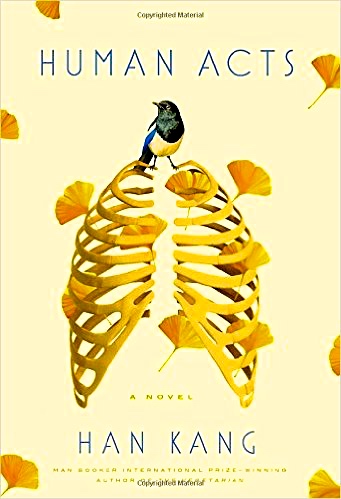 Having grown up in Gwangju, South Korea, where her brother still lives, author Han Kang writes of that city’s civil uprising of May, 1980, when she was ten years old, and the military’s reaction with all its attendant horrors. In that perennially restive southern city, many young people, most of them unarmed, were slaughtered at the hands of aggressive government soldiers, and when the battles ended, there were no clear victors. Just six months prior, President Park Chung-hee, a harsh dictator, was assassinated by the nation’s security services. He had ruled the country for eighteen years and was succeeded as President by Major General Chun Doo-Hwan, in April, 1980. The following month, Chun feared the possibility of a popular rebellion in Gwangju and quickly deployed the army there. By closing the university, he thereby freed many earnest, but untrained, young people who took to the streets to express their dissatisfaction with the new military government. Many were murdered.
Having grown up in Gwangju, South Korea, where her brother still lives, author Han Kang writes of that city’s civil uprising of May, 1980, when she was ten years old, and the military’s reaction with all its attendant horrors. In that perennially restive southern city, many young people, most of them unarmed, were slaughtered at the hands of aggressive government soldiers, and when the battles ended, there were no clear victors. Just six months prior, President Park Chung-hee, a harsh dictator, was assassinated by the nation’s security services. He had ruled the country for eighteen years and was succeeded as President by Major General Chun Doo-Hwan, in April, 1980. The following month, Chun feared the possibility of a popular rebellion in Gwangju and quickly deployed the army there. By closing the university, he thereby freed many earnest, but untrained, young people who took to the streets to express their dissatisfaction with the new military government. Many were murdered.
 Using both research and interviews conducted with many survivors, Han Kang recreates those fraught times, developing a circular narrative of six overlapping chapters, with each chapter depicting vibrant, realistic characters who participate in the rebellion in Gwangju. As they overlap and reappear in each other’s narratives, the characters reveal different points of view of the action they have observed. Han’s prodigious descriptive skills are more than equal to the task of describing the one-sided warfare between naïve young men and their heavily armed opponents, but she also sees this action in broad thematic terms. In her previous novel, The Vegetarian, Han asked basic questions about who we are as humans, who we are in relation to the outside world, and how much control we have over our lives. In Human Acts, she takes these same themes to another level, delving deeply into the questions raised in the opening quotation on whether human beings are fundamentally cruel and whether cruelty, with its damage and degradation, is the only thing we share with each other as a species. Is cruelty, in fact, the “essential fate” of mankind and is it inevitable, she asks.
Using both research and interviews conducted with many survivors, Han Kang recreates those fraught times, developing a circular narrative of six overlapping chapters, with each chapter depicting vibrant, realistic characters who participate in the rebellion in Gwangju. As they overlap and reappear in each other’s narratives, the characters reveal different points of view of the action they have observed. Han’s prodigious descriptive skills are more than equal to the task of describing the one-sided warfare between naïve young men and their heavily armed opponents, but she also sees this action in broad thematic terms. In her previous novel, The Vegetarian, Han asked basic questions about who we are as humans, who we are in relation to the outside world, and how much control we have over our lives. In Human Acts, she takes these same themes to another level, delving deeply into the questions raised in the opening quotation on whether human beings are fundamentally cruel and whether cruelty, with its damage and degradation, is the only thing we share with each other as a species. Is cruelty, in fact, the “essential fate” of mankind and is it inevitable, she asks.
In the first of the six episodes, “The Boy, 1980,” a young boy of fifteen, the smallest in his third year class of middle school, is viewing the bodies of twenty-eight rebels who have been killed in action in Gwangju. The bodies have been laid out in the gym of the university, and the young boy is anxious about the fate of a friend. As the families arrive to identify their loved ones, the national anthem is playing and the Taegukgi, the national flag, is spread over each coffin, leading the boy to wonder “why you would sing the national anthem for people who’d been killed by soldiers” and “why cover the coffin with the Taegukgi? As though it wasn’t the nation itself that had murdered them.” As his mother comes to drag him back home, Dong-ho begins to wonder about the souls of the dead, “How long do souls linger by the side of their bodies? Do they really flutter away like some kind of bird? Is that what trembles the edges of the candle flame?” – questions which continue throughout the novel.
In the next section, the “Boy’s Friend, 1980,” the lingering soul of an otherwise unidentified boy is commenting on what has happened to him and to the man lying across him as “the helmets” and the Red Cross arrive to put them on a military truck. He is frustrated because he cannot separate his soul from his dead body to check on a friend, and he is worried about his sister. “My sister’s soul, like mine, [may] still be lingering somewhere, but where?…Without bodies how would we know each other?” Memories come to him, and as new bodies are brought in, the souls cluster around. When the pyre of bodies starts burning, the boy wonders where his soul should go, sorry because he feels he has failed.
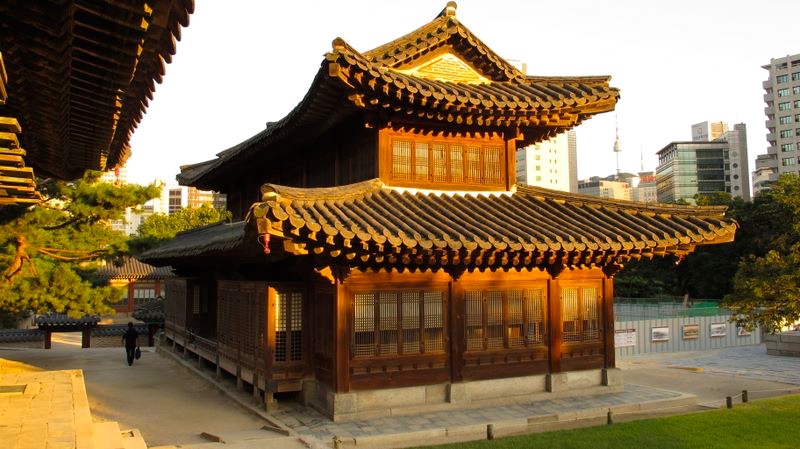
Deoksugung Palace in Seoul, where an abused editor gets off the bus. The contrast between the beauty of the ancient palace and the horrors of the editor’s present is unmistakable. Photo by Ivan Herman.
Subsequent sections continue the story of the rebellion with “The Editor, 1985,” as a young woman gets off the bus in front of the Deoksu Palace on her way home from work. She wears a scarf hiding her face, showing only her eyes. She has just been “struck so hard, over and over in the exact same spot, that the capillaries laced over her right cheekbone burst, the blood trickling out through her torn skin.” She had been working with the translator of a new work with political overtones, a person living in hiding whose own family does not know how to reach him. Times for the editor are tense, and a mysterious person has now assaulted her for this work. Flyers saying “Down with the Butcher, Chun Doo-Hwan” emphasize that not much has changed in the five years since the rebellion, and she has clearly paid the price.
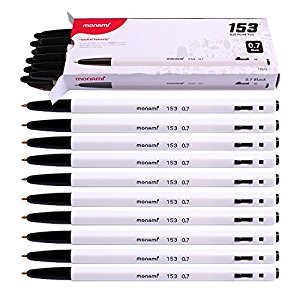
The simple Monami Biro pen was used as a torture device, another ironic detail, since “mon ami” is French for “friend.”
“The Prisoner, 1990,” ten years after the rebellion, details a man’s long imprisonment in a cell with ninety others and his on-going torture there – every interrogation begins with an assault and continues as a Monami Biro is jammed between a prisoner’s twisted fingers, where it remains for weeks or months. Released years later, the prisoner cannot forget the horrors and his agonized questions about his soul, likening it to fragile glass. “Factory Girl, 2002” provides more information about censorship, unionization, strike-breakers, and the personal costs, even as late as 2002, while “The Boy’s Mother” takes place in the present, thirty years after the rebellion. In this especially moving section, the mother reveals that she has never been able to forget her own actions toward her son during the uprising and its costs, reliving those events from 1980 every day. Han’s work takes an emotional toll, but every detail works, and no detail is gratuitous. Ultimately, she recreates the turmoil and human cost of more than two decades of Korean history, and she does it in a mere two hundred pages.
Note: To avoid spoilers, I have not included the names of the characters within the separate sections. Though the number of characters is small, some names are similar, and readers might want to keep a brief character list which will show how these overlap.
ALSO by Han Kang: THE VEGETARIAN
Photos, in order: The author’s photo appears on http://koreanliteraturenow.com/
The South Korean flag, the Taegukgi, is shown on http://koreanliteraturenow.com/
The unarmed boy being beaten in the Gwangju uprising is from https://inconseoulable.wordpress.com
Built in the 14th century, the Deoksugung Palace was a residence of the royal family until early in the twentieth century. Photo by Ivan Herman. The contrast between the beauty of the ancient palace and the horrors of the present is unmistakable in the image of “the Editor” getting off the bus after being abused in the present. Photo by Ivan Herman. https://www.ivan-herman.net/
The simple Monami Biro pen, used as a torture device, is another ironic detail, since “mon ami” is French for “friend.” https://www.amazon.com/
